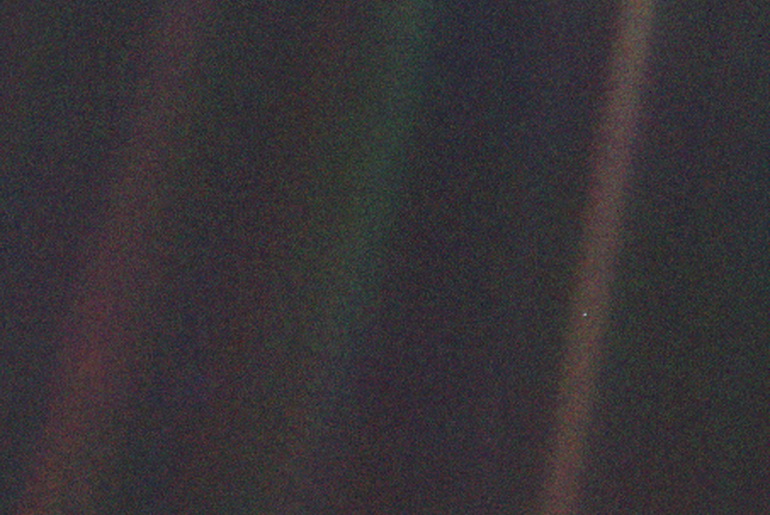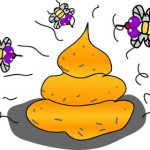Part 2. Photographed from a far away vantage point, the Earth might not seem of any particular interest. But for us, it’s different. That pale blue dot, that’s here, that’s us, that’s home.
He is also well-known for his contributions to the scientific research of extraterrestrial life.
Pale Blue Dot is a photograph of planet Earth, taken on February 14, 1990, by the Voyager 1 space probe.

In the photograph Earth’s apparent size is less than a pixel; the planet appears as a tiny speck, approximately halfway down the brown band to the right, against the vastness of space. The photograph is taken from a record distance of about 6 billion kilometres, 3.7 billion miles or 40.5 AU (1 Astronomical Unit is about 150 million km.), as part of the Family Portrait series of images of our Solar System.
Voyager 1 had completed its primary mission and was leaving the Solar System. At the request of astronomer and author Carl Sagan, the Voyager was commanded by NASA to turn its camera around and take one last photograph of the Earth, across the great expanse of space.
Carl Sagan comments on the image above:
 “From this distant vantage point, the Earth might not seem of any particular interest. But for us, it’s different. Consider again that dot. That’s here. That’s home. That’s us. On it everyone you love, everyone you know, everyone you ever heard of, every human being who ever was lived out their lives. The aggregate of our joy and suffering, thousands of confident religions, ideologies and economic doctrines, every hunter and forager, every hero and coward, every creator and destroyer of civilization, every king and peasant, every young couple in love, every mother and father, hopeful child, inventor and explorer, every teacher of morals, every corrupt politician, every ‘superstar’, every ‘supreme leader’, every saint and sinner in the history of our species lived there — on a mote of dust, suspended in a sunbeam.
“From this distant vantage point, the Earth might not seem of any particular interest. But for us, it’s different. Consider again that dot. That’s here. That’s home. That’s us. On it everyone you love, everyone you know, everyone you ever heard of, every human being who ever was lived out their lives. The aggregate of our joy and suffering, thousands of confident religions, ideologies and economic doctrines, every hunter and forager, every hero and coward, every creator and destroyer of civilization, every king and peasant, every young couple in love, every mother and father, hopeful child, inventor and explorer, every teacher of morals, every corrupt politician, every ‘superstar’, every ‘supreme leader’, every saint and sinner in the history of our species lived there — on a mote of dust, suspended in a sunbeam.
The Earth is a very small stage in a vast cosmic arena. Think of the rivers of blood, spilled by all those generals and emperors, so that in glory and triumph they could become the momentary masters of a fraction of that dot. Think of the endless cruelties visited by the inhabitants of one corner of this pixel on the scarcely distinguishable inhabitants of some other corner. How frequent their misunderstandings, how eager they are to kill one another, how fervent their hatreds. Our posturings, our imagined self- importance, the delusion that we have some privileged position in the universe, are challenged by this point of pale light. Our planet is a lonely speck in the great enveloping cosmic dark. In our obscurity, in all this vastness, there is no hint that help will come from elsewhere to save us from ourselves. The Earth is the only world known, so far, to harbor life.
There is nowhere else, at least in the near future, to which our species could migrate. Visit, yes. Settle, not yet. Like it or not, for the moment the Earth is where we make our stand. It has been said that astronomy is a humbling and character-building experience. There is perhaps no better demonstration of the folly of human conceits than this distant image of our tiny world. To me, it underscores our responsibility to deal more kindly with one another and to preserve and cherish the pale blue dot, the only home we’ve ever known.”
Thanks a lot to that wonderful man, Carl Sagan, author of Cosmos, for sharing his wonder with us about our place in the Cosmos and in Time and about the preciousness of our planet and of our lives, here, now.
Read the other essays from the series At Home in the Universe




Comments are closed.